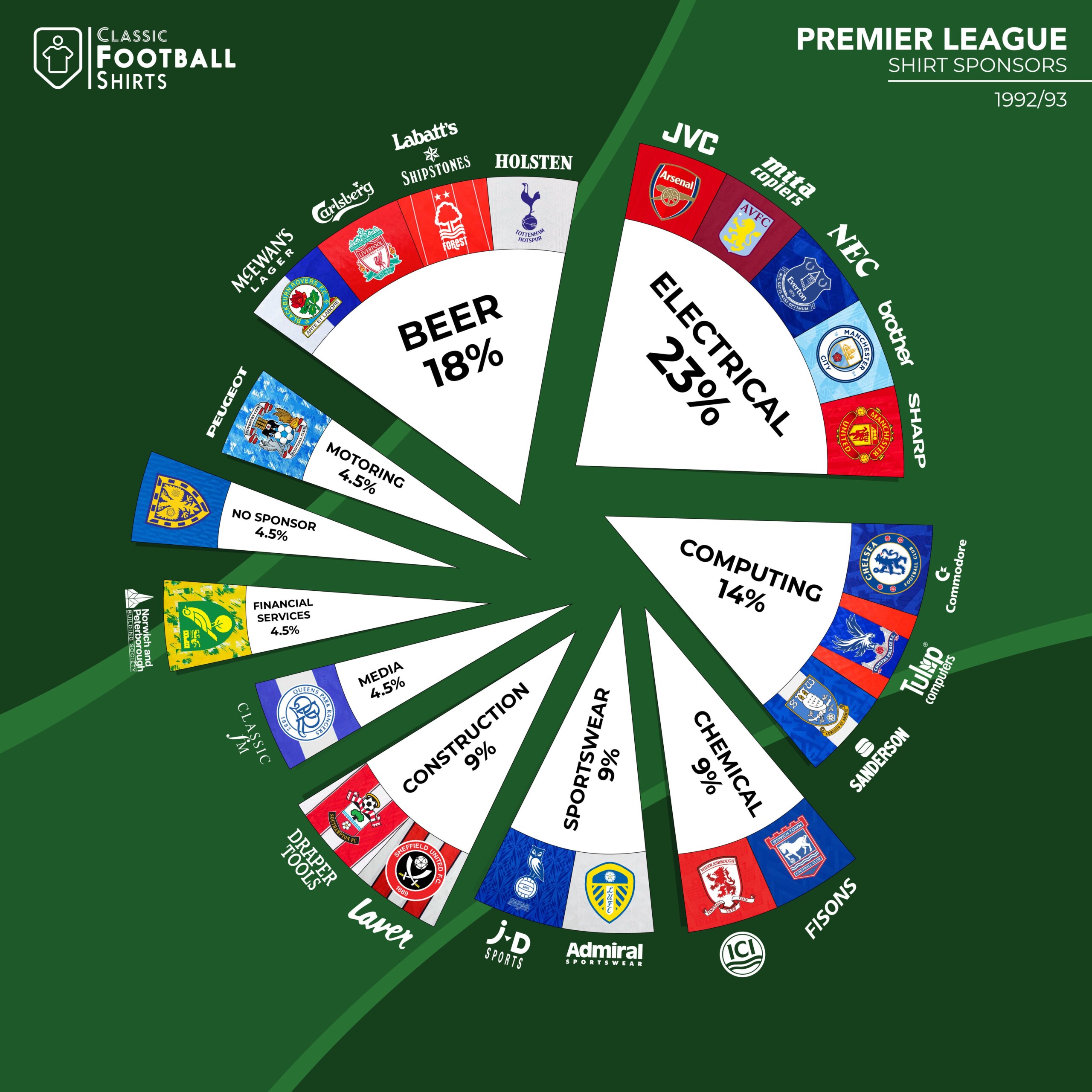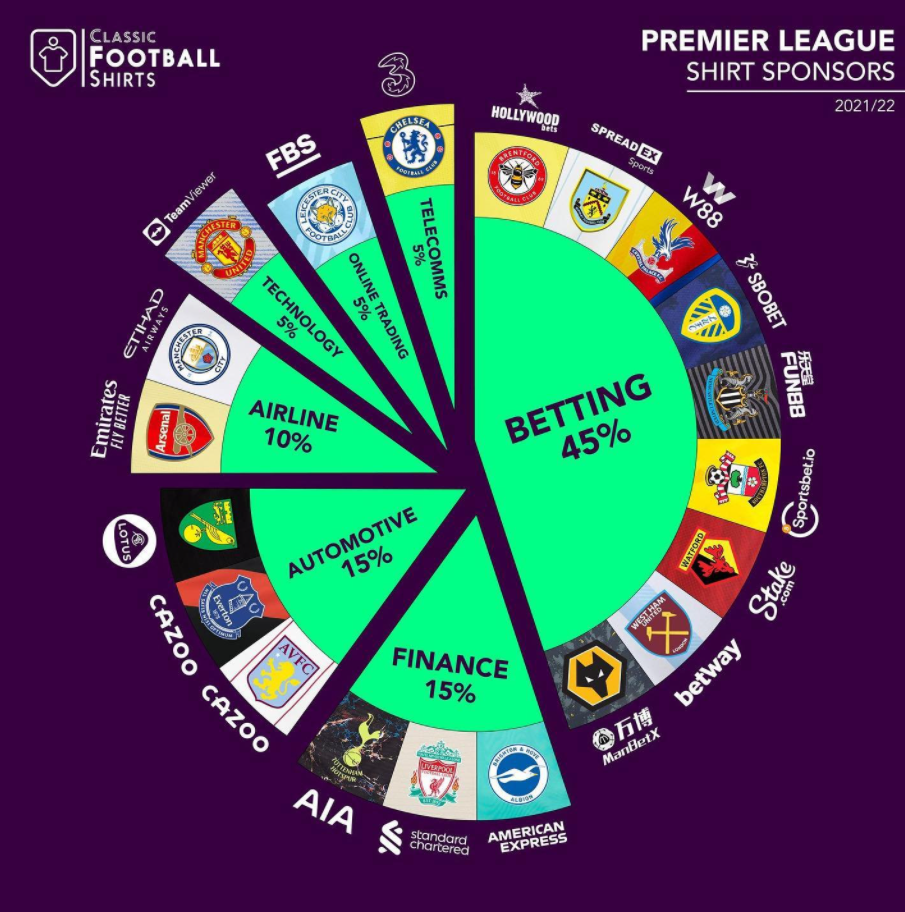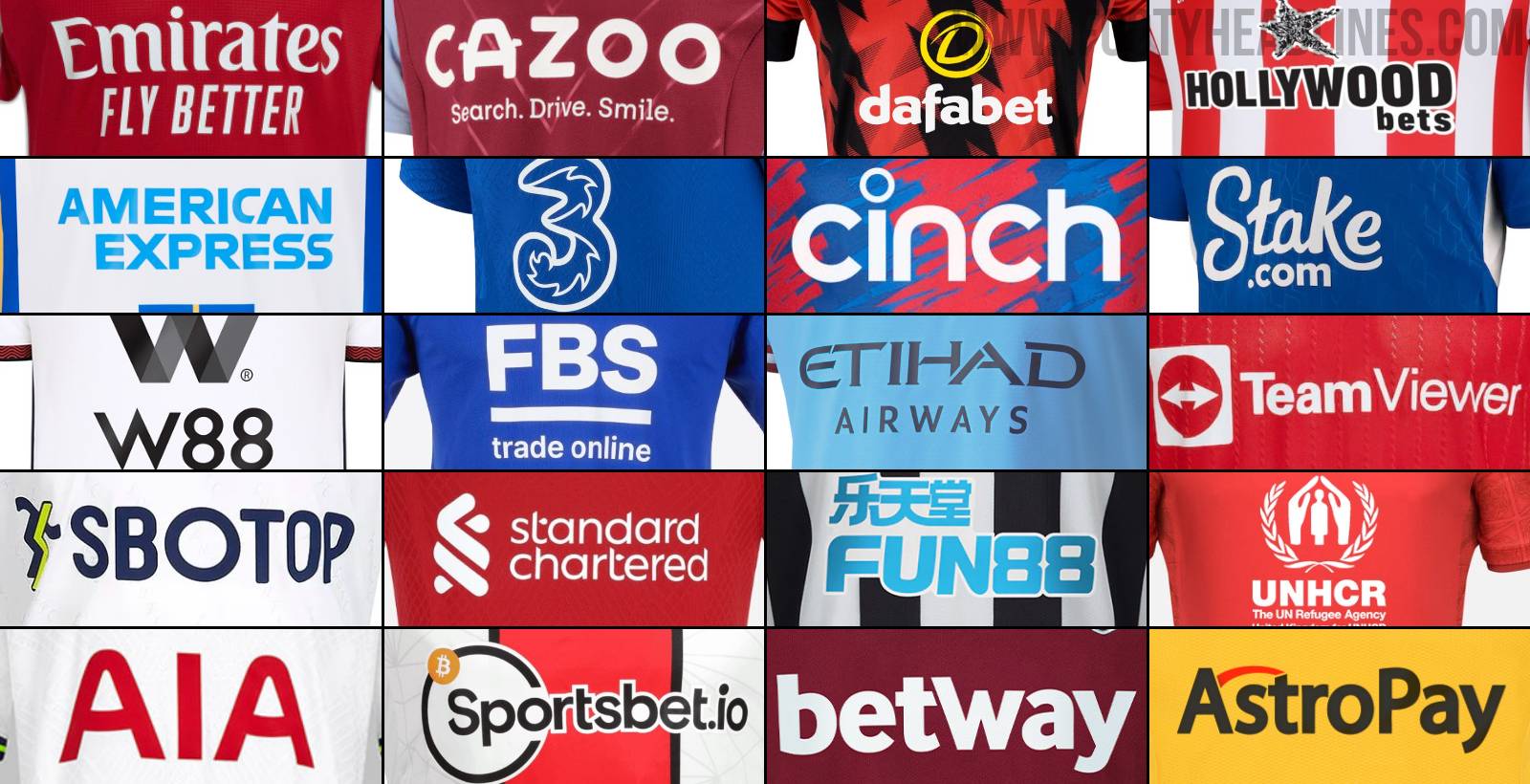UK Football Teams Score Big with Diverse Sponsorship Deals
The sponsorship landscape for UK football teams is more vibrant and multifaceted than ever, with clubs securing partnerships across various sectors to bolster their financial standing.
Each football team typically has a principal shirt sponsor, and many also feature secondary sponsors on sleeves, shorts, and even socks. Additionally, kit manufacturers like Nike, Adidas, and Under Armour play a significant role, branding the team’s apparel from head to toe.
Note:
This article features content from the Marketing Made Clear podcast. You can listen along to this episode on Spotify:
Principal Shirt Sponsors
The front of the shirt remains prime real estate for sponsors, with many Premier League clubs securing lucrative deals. For instance, Chelsea recently announced Infinite Athlete as their shirt sponsor, while gambling companies continue to dominate this space, although this trend will cease from the 2026/27 season due to new regulations.
Currently, eight of the 20 Premier League clubs feature gambling sponsors on their shirts, with notable exceptions like Arsenal continuing their long-standing partnership with Emirates (Source: Score and Change) (Source: Betting Gods).


Images from Classic Football Shirts
Times They are ‘a Changing
Times change, and this ban on gambling companies sponsoring football teams in the UK is nothing new. A vast number of 90’s Premier League (or Premiership) football teams were sponsored by boozy brands! In fact 18% of Premier League teams were sponsored by alcohol brands in the 1992/3 season (see above).
Banning Alcohol Sponsors of Premier League Teams
The banning of alcohol sponsors in the Premier League during the 1990s marked a significant shift in sports marketing and public health policy. This move came amidst growing concerns about the social impact of alcohol consumption and the influence of alcohol advertising on young fans. In particular, campaigns highlighted the link between alcohol sponsorship in sports and the normalisation of drinking culture among impressionable audiences.
Regulatory bodies and health advocates argued that the prevalence of alcohol branding on team kits and in stadiums promoted an unhealthy message, particularly in a country grappling with alcohol-related health issues. As a result, the Premier League and other football leagues began phasing out alcohol sponsorships, setting a precedent for future restrictions on advertising harmful products in sports.
Please, won’t somebody think of the children.
Why are Gambling Sponsors for Premier League Sides Controversial?
In 2020/21 Gambling Sponsors accounted for 45% of Premier League Sponsorship, which seemingly triggered
Gambling sponsorship of Premier League teams is controversial due to its potential impact on vulnerable populations and the increasing prevalence of gambling addiction. Critics argue that the ubiquitous presence of betting companies on team kits, stadiums, and in advertising spaces normalises gambling and exposes young fans to its risks.
So, similar to the boozy brands of the 90’s!
Studies have shown that this exposure can contribute to gambling-related harm, especially among impressionable audiences. Moreover, there are concerns about the ethical implications of promoting gambling in a sport watched by millions worldwide. The upcoming ban on gambling sponsors from the 2026/27 season reflects growing public and regulatory pressure to address these issues and promote responsible gambling practices.
Kit Manufacturers
Kit sponsorship deals are another significant revenue stream. Umbro leads with five Premier League teams, including West Ham United and Bournemouth, while Adidas and Nike each outfit four teams, such as Arsenal and Liverpool for Adidas, and Chelsea and Tottenham Hotspur for Nike. Other brands like Castore, Puma, and Hummel also have notable presences, reflecting the diverse array of partnerships in this category (Source: Last Word On Sports).
Stadium and Ground Sponsorship
Stadium sponsorships add another layer of branding, with many grounds carrying the names of sponsors. For instance, Arsenal’s Emirates Stadium and Manchester City’s Etihad Stadium are prime examples of how deeply integrated these partnerships can become. The stadium sponsorships not only contribute significant revenue but also reinforce the sponsor’s brand through constant visibility during matches and media coverage (Source: Betting Gods) (Source: Last Word On Sports).
In-Stadium Advertising
Beyond apparel, in-stadium advertising remains a critical component of football sponsorship. Digital advertising boards around the pitch, static signage, and even advertisements on the steps of stands ensure brands are omnipresent during games. High-visibility areas such as the space beside goals and the seats in the players’ dugouts, often sponsored by luxury brands like Rolex or automotive companies, highlight the premium these spots command. Even clocks and other functional elements within the stadium can be sponsored, further illustrating the myriad ways brands can integrate their identity with football clubs (Source: Last Word On Sports) (Source: CityAM).
Show me the Money!
How Much are these Deals Actually Worth?
Sponsorship deals in the Premier League are immensely lucrative, reflecting the league’s global appeal and massive viewership. The value of these deals varies significantly across clubs. For instance, Manchester City has a front-of-shirt sponsorship deal with Etihad Airways worth approximately £67.5 million annually. Liverpool’s deal with Standard Chartered is valued at around £65.8 million per year. These figures highlight the immense financial muscle that top clubs wield in the sponsorship market (Source: The Sponsor) (Source: SportBusiness).
In addition to front-of-shirt deals, other sponsorship arrangements also contribute significantly to club revenues. Sleeve sponsorships, for example, can be quite valuable; Manchester City’s sleeve deal with OKX is reported to be worth £55 million annually. Even smaller clubs secure significant deals; Aston Villa’s front-of-shirt deal with Betano is valued at £40 million per year (Source: The Sponsor).
Overall, the total market value of Premier League club sponsorships for the 2023-2024 season is estimated at $1.504 billion. This includes various forms of sponsorship, such as kit suppliers, sleeve sponsors, and front-of-shirt deals, underscoring the comprehensive and multifaceted nature of commercial partnerships in the league (Source: GlobalData) (Source: Sport Business).

Future Trends
Looking ahead, the football sponsorship market in the UK shows no signs of slowing down. Despite economic uncertainties, major brands continue to see the value in sports sponsorships. For instance, Coca-Cola recently returned to UK sports sponsorship with a deal in the Premier League, underlining the sector’s resilience and appeal. The shift away from gambling sponsors by 2026/27 will likely see a rise in partnerships with financial services, technology firms, and other sectors seeking the expansive reach of football audiences (Source: CityAM).
Conclusion
In conclusion, the sponsorship ecosystem for UK football teams is a complex and highly lucrative landscape, involving not just shirt sponsors, but also kit manufacturers, stadium sponsorships, and extensive in-stadium advertising. This multifaceted approach ensures that by the end of any televised match, viewers have been exposed to a wide array of brands, each leveraging the sport’s immense popularity to boost their visibility and engagement.
Oh please, won’t somebody think of the children!
Up Next:
More marketing hate!


